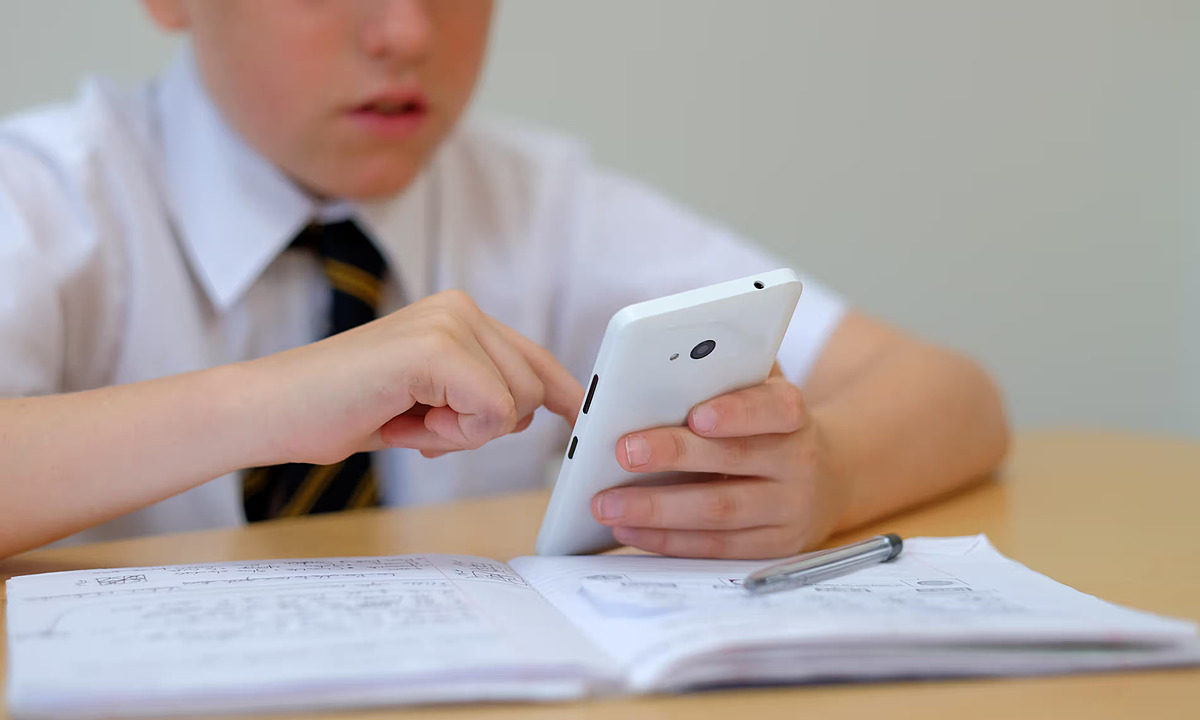New York has become the largest US state to ban smartphones in public schools. Starting in the fall of 2025, nearly 2.5 million students from kindergarten through 12th grade will not be allowed to use their phones during school hours, including lunch and recess, unless permitted by a teacher.
According to the 2023 Global Education Monitoring (GEM) Report, 24% of 211 education systems surveyed had implemented phone bans in schools. By 7/2024, this figure had risen to 31%, and many other countries are considering nationwide bans.
 |
A student using a smartphone in class. Photo: Alamy |
A student using a smartphone in class. Photo: Alamy
Different countries are taking varied approaches to phone regulations. France prohibits mobile phone use in schools to minimize distractions (except for students with disabilities). Bangladesh bans both teachers and students from bringing phones into classrooms, while Uzbekistan requires students to turn off their phones before class, allowing their use only in emergencies.
In Scotland and the Netherlands, phones are permitted for educational purposes only. In 11/2023, the Dutch government announced plans to extend the ban to primary and special schools. Spain has recommended banning phones in primary schools and limiting their use in secondary schools to educational or medical purposes. The Spanish Data Protection Agency has also raised concerns about the use of personal phones and tablets for educational purposes. Sweden prohibits students from grades 1 to 9 from using phones during class and breaks. The Swedish Ministry of Education will also replace digital devices with printed books.
In the UK, following a parliamentary inquiry, the Department for Education issued guidance encouraging headteachers to ban phones throughout the school day to improve focus and reduce cyberbullying. The guidance also recommends confiscating or securely storing devices.
Countries such as Bulgaria, Greece, Latvia, Portugal, Switzerland, and Turkey have also implemented partial or complete phone restrictions in schools, often accompanied by guidelines on screen time and social media policies.
On 10/7, the Ho Chi Minh City Department of Education and Training also announced plans to ban students from using phones at school, including during recess, unless permitted by a teacher, starting in the 2025-2026 school year.
The 2023 GEM Report asserts that technology should only be used in educational settings if it genuinely enhances learning. Misuse or improper use can lead to student distraction. A study across 14 countries indicated that removing phones in Belgium, Spain, and the UK improved academic results, particularly for underachieving students.
Furthermore, many parents and teachers are worried about student privacy and mental well-being. The GEM Report highlights the negative impact of social media on mental health and the reinforcement of gender stereotypes. The report cited Facebook's internal research showing that 32% of teenage girls felt worse about their bodies after using Instagram. TikTok has also been criticized for its algorithm, which consistently suggests content related to body image and eating disorders.
Studies suggest that girls who start using social media around the age of 10 are more likely to experience emotional and social communication problems as they grow older, a trend not as apparent in boys. A UK study found that children with good emotional health demonstrate better academic progress and are more engaged in secondary school.
Finally, phones and social media contribute to behavioral and disciplinary issues. Cyberbullying has become more prevalent, causing significant psychological harm to victims and disrupting the learning environment. Secretly using devices during class, filming, taking photos, or sharing inappropriate information undermines respect for discipline and affects student relationships with teachers and peers.
Thuc Linh (Europe News, Unesco World Education Blog)












